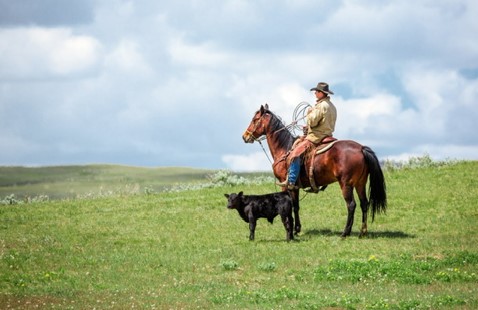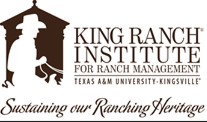
The King Ranch® Institute for Ranch Management (KRIRM) hosted a successful symposium titled Ranching in the 21st Century: Learn Proven Strategies from Industry Leaders. When creating a successful enterprise there is no silver bullet to getting it done. There are a multitude of variables that determine the decisions that need to be made. However, after looking at the philosophical approach and strategies, you start to see a common mindset amongst management of the most successful ranches, both large and small.
The 19th Annual Holt Cat® Symposium on Excellence in Ranch Management hosted a wide variety of industry leaders who shared their knowledge and philosophies that have propelled them to become some of the most successful and respected minds in the industry.
The symposium began with Derrell Peel, PhD and Professor of Agribusiness at Oklahoma State University. Dr. Peel’s presentation identified key trends in the ever-changing market as he shared his insights on the future challenges and opportunities of the ranching industry, with special focus on the beef supply chain.
Following Peel’s presentation was Clint Richardson, General Manager of Deseret Cattle and Citrus, and Shelby Horn, Vice President and General Manager of Abell Livestock. Richardson addressed the importance of determining “What is your business?” while sharing his perspective on the land business in relation to the business enterprise the land supports. Horn followed with discussing the opportunistic mindset and approach to finding, evaluating, and implementing less traditional ranching enterprises.
Dale Smith concluded the first day by giving his approach to managing the JA, Excell, Turkey Track, and RO Ranches. Smith discussed his philosophy on land, business, management, and risk as he described one of the most innovative models of ranching success in North America.
Day two of the symposium began with Tom Field, PhD, Executive Director of the Engler Institute for Agriculture Entrepreneurship at University of Nebraska-Lincoln. Gary Price, owner and manager of 77 Ranch, and Sage Askin, owner and manager of Askin Land and Livestock, providing proven strategies that have worked for their operations. Price and Askin addressed less discussed, but fundamentally important, topics in the industry – how to find profit on mid-sized
ranching operations and how to build a successful ranching operation from scratch, respectively.
The last two presentations of the day provided attendees with the personal success stories of James Sewell, General Manager of TA Ranches, and John Maddux, Owner and Manager of Maddux Cattle Company. Sewell explained how he adapted TA Ranch operations into the successful enterprise it is today. Maddux followed up with his perspective and unique story of the evolution of Maddux Cattle Company after working on Wall Street for 12 years.
Dave DeLaney, Practitioner in Ranch Management with KRIRM, and retired Vice-President and General Manager of Ranching and Wildlife at King Ranch, Inc., provided the closing comments and take-home message for attendees.

Key Takeaways
The symposium was full of impactful ideas and examples for attendees, challenging them to evaluate the current state of their operations and empowering them to succeed while ranching in the 21st century. The most common and proven strategies shared by industry leaders begins with having and using mission and vision (purpose) statements as guiding principles. Successful ranch-business managers hold appropriate non-compromise standards that are seldom driven solely by profit maximization which too often compromises resource sustainability, or may conflict with their mission and
vision. The ranching business should have a clear organizational structure and chain of command to facilitate communication and effective employee management.
Successful operations maintain excellent record keeping and benchmarking systems that allow accurate determination and tracking of unit cost of production and enterprise/ranch performance trends. In the same vein, they strive to be low cost producers, but do not sacrifice stewardship, animal husbandry, or product quality. These goals need not be mutually
exclusive.
Lastly, they are lifelong learners and re-learners who are passionate and committed to ranching, and take joy in their work. This joy is contagious and a positive contributor to workplace culture.
An industry tradeshow of 20 vendors offered attendees an opportunity to network with agricultural lending and supply/service companies supporting the ranching industry. A social and prime rib dinner recognized 10 individuals who
received their Texas Farm Credit Certificate in Advanced Ranch Management. To earn the certificate, the individuals completed four KRIRM lectureships and two symposia within a three-year period.
About KRIRM
Formed in 2003, KRIRM is a ranch management master’s program at Texas A&M University-Kingsville created in honor of the 150th Anniversary of the legendary King Ranch. As the only Master of Science in Ranch Management program in the world, KRIRM teaches graduate students using a multi-disciplinary, systems approach to ranch management. The institute also provides the highest quality lectureships and symposia to stakeholders in the ranching industry through its event outreach component as we strive to sustain our ranching heritage. For more information about KRIRM, visit krirm.tamuk.edu.


















